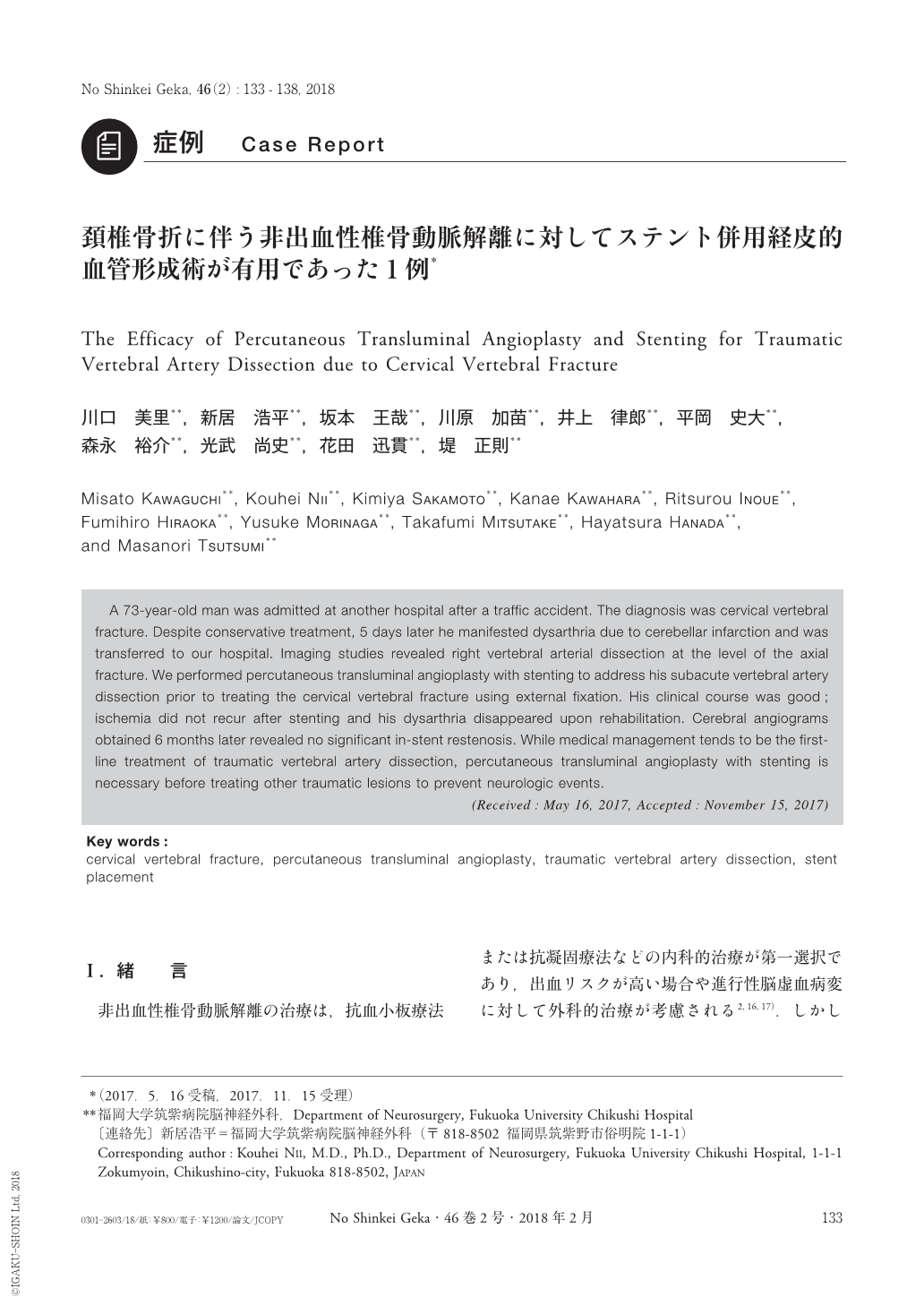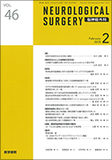Japanese
English
- 有料閲覧
- Abstract 文献概要
- 1ページ目 Look Inside
- 参考文献 Reference
Ⅰ.緒言
非出血性椎骨動脈解離の治療は,抗血小板療法または抗凝固療法などの内科的治療が第一選択であり,出血リスクが高い場合や進行性脳虚血病変に対して外科的治療が考慮される2,16,17).しかしながら,外傷性椎骨動脈解離に対する内科的治療は他部位の出血リスクが高くなり,解離病変の進行に伴う遅発性進行性脳虚血症状を来す危険もあるため,治療手段は確立されていない10,19).今回,われわれは脳梗塞で発症した頚椎骨折に伴う外傷性椎骨動脈解離に対して亜急性期にステント併用経皮的血管形成術を施行し,進行性脳梗塞の予防と頚椎疾患を良好に管理できた症例を経験した.本稿では,外傷性椎骨動脈解離に対する血管内治療の詳細と有効性に関して,文献的考察を加えて報告する.
A 73-year-old man was admitted at another hospital after a traffic accident. The diagnosis was cervical vertebral fracture. Despite conservative treatment, 5 days later he manifested dysarthria due to cerebellar infarction and was transferred to our hospital. Imaging studies revealed right vertebral arterial dissection at the level of the axial fracture. We performed percutaneous transluminal angioplasty with stenting to address his subacute vertebral artery dissection prior to treating the cervical vertebral fracture using external fixation. His clinical course was good;ischemia did not recur after stenting and his dysarthria disappeared upon rehabilitation. Cerebral angiograms obtained 6 months later revealed no significant in-stent restenosis. While medical management tends to be the first-line treatment of traumatic vertebral artery dissection, percutaneous transluminal angioplasty with stenting is necessary before treating other traumatic lesions to prevent neurologic events.

Copyright © 2018, Igaku-Shoin Ltd. All rights reserved.


